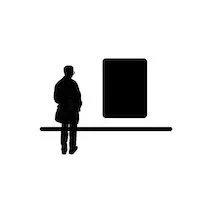if you are old enough to remember when TV didn’t have a remote control and was still built like a piece of furniture, you remember Evil Kenevil. i stumbled onto this footage after hearing rumblings about a possible upcoming 30 for 30 doc and after reading the following description, i felt obligated to share. while i wasn’t alive for this stunt, it was the birth of an American hero. seems like Hunter Thompson should have covered it.
While in Las Vegas, Nevada, to watch Dick Tiger fight a middleweight title fight, Knievel first saw the fountains at Caesar’s Palace and decided to jump them. To get an audience with the casino’s CEO Jay Sarno, Knievel created a fictitious corporation called Evel Knievel Enterprises and three fictitious lawyers to make phone calls to Sarno. Knievel also placed phone calls to Sarno claiming to be from ABC-TV and Sports Illustrated inquiring about the jump. Sarno finally agreed to meet Knievel and the deal was set for Knievel to jump the fountains on December 31, 1967. After the deal was set, Knievel tried to get ABC to air the event live on Wide World of Sports. ABC declined, but said that if Knievel had the jump filmed and it was as spectacular as he said it would be, they would consider using it later.
Knievel used his own money to have actor/director John Derek produce a film of the Caesar’s jump. To keep costs low, Derek used his then-wife, Linda Evans, as one of the camera operators. It was Evans who filmed Knievel’s famous landing. On the morning of the jump, Knievel stopped in the casino and placed a single $100 dollar bet on the blackjack table, which he lost, stopped by the bar and got a shot of Wild Turkey and then headed outside where he was joined by several members of the Caesar’s staff, as well as two scantily clad showgirls. After doing his normal pre-jump show and a few warm up approaches, Knievel began his real approach. When he hit the takeoff ramp, he felt the motorcycle unexpectedly decelerate. The sudden loss of power on the takeoff caused Knievel to come up short and land on the safety ramp which was supported by a van. This caused the handlebars to be ripped out of his hands as he tumbled over them onto the pavement where he skidded into the Dunes parking lot. As a result of the crash, Knievel received a crushed pelvis and femur, fractures to his hip, wrist and both ankles and a concussion that kept him in a coma for 29 days.
